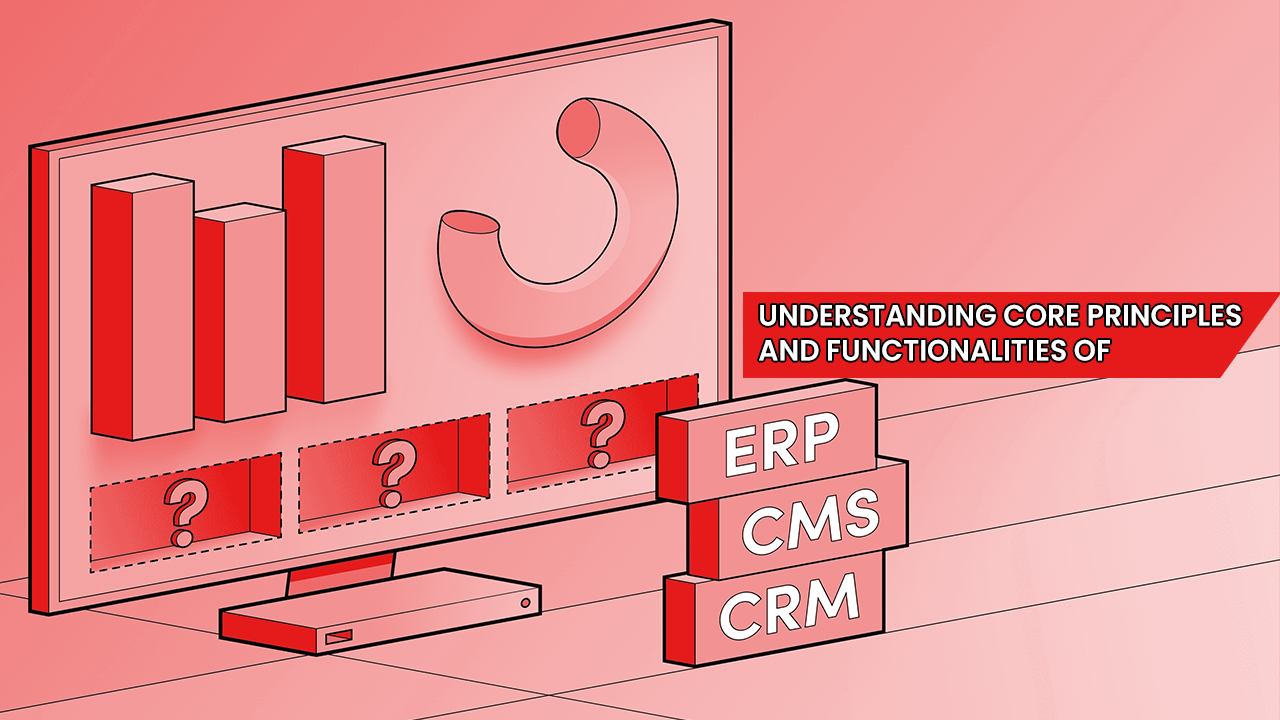The management of a website’s content and the archiving of customer data can be difficult and time-consuming tasks. A good content management system (CMS) can be quite helpful in this situation. Although CMS, CRM, and ERP are independent solutions with significant variations in their fundamental ideas and functionalities, their integration might result in more seamless management of your company’s operations. To make the best choice, it is crucial to comprehend these distinctions. Let’s start now.
What is CMS
The information and media files for your website are reserved on a platform called a CMS, or content management system. It enables users to create and maintain websites without having to learn how to code or even create them from scratch. Content Management Systems propel the management of all the content significantly. You don’t have to learn how to code to manage your content. The expansion of CMS development services in recent years has been extraordinary, transforming them from static web pages to animated, interactive websites. Although the vital objective of those initial systems was to facilitate the creation of websites, CMS functionality is still expanding today.
The Inevitable Content and CMS Bond
Any website needs content since it expresses the company’s mission and values and aids in search engine optimization. So, dependable CMS software might show to be of great service to establishing an attractive online portal.
Since content marketers, editors, and writers all want a simple way to access and seamless experiences within their CMS platform, CMS now prioritizes content, because there are so many CMS options available, they frequently all resemble one another in appearance or tone. Most claim to offer essential features and functionalities simultaneously being reliable, scalable, and secure.
5 CMS Criteria for Blogging Platform
- Market presence- Some CMSs have a clear dominance in the marketplace.
- Coat Value- Every CMS has a different pricing strategy
- Easy to Use- Ideally, everyone in the team should be able to easily use the CMS- even without developing knowledge or skill.
- Customization- To stay on brand, personalize visitor experience, and improve marketing and conversion rates, an ideal CMS should offer lots of customization options and flexibility.
- Support- Some CMSs don’t have central support options, while others come with 24/7 support.
What is CRM
Customer relationship management, or CRM, is a technology that is used to centrally store data about customers, their buying patterns, payment options, and other sales activities in order to analyze interactions and track data during the entire customer journey. It promotes providing and marketing strategies that maximize a business’s worth. Generally speaking, it is intended to speed up or minimize inefficient operations, automate repetitive jobs, and ensure quality while raising sales quota. Integrating several departments, like marketing and customer support, it helps manage team activities on a regular basis.
Aside from maintaining contact with clients, what does CRM mean? What are the advantages of using the tool for a business?
It offers improved data management, improved communication, scheduled statements, and information that is easily shared inside a corporation.
The essential elements of CRM services are
- Increased marketing campaigns
- Sales trends and strategies can be optimized
- Social media monitoring tools can be used to ensure quality,
- Repetitive jobs can be automated
- Customer journey can be tracked and customized;
- Integrating software from a third party.
Why Should a Company use CRM
CRM is designed to keep activities organized by tracking everything that comes from a client base, response and interaction, and everything that goes out from a company to a client. The platform saves energy, time, and money, enabling a team to arrange customer interactions in one place. It is never too early to start implementing a CRM system.
The only problem is that it is limited to customer-facing departments and mid-sized organizations, compared to ERP. So, what does ERP mean for mid-sized businesses and large enterprises?
What Is an ERP Software?
ERP stands for Enterprise Resource Planning. It is designed to improve the efficiency of a business process with a focus on every aspect: costs, visibility, and the ratio of work performed by a team. The main purposes for numerous tasks include project management, accounting, budget planning, forecasts, and analysis of reports and financial results of the organization. ERP enhances business performance and simplifies workflow for large companies, reducing the time spent on complex processes. Within such a system, many business processes intersect and provide a quick exchange of data between them.
Key Features of ERP
Enterprise resource planning technologies assist in
- Financial and accounting data monitoring;
- Automation of repeatable business tasks;
- Alerting about issues in different departments;
- Storing information about products or services;
- Visibility and tracking all business metrics;
- Processing orders;
- Recruiting and hiring, onboarding and timekeeping.
Who are We!!
With years of expertise in creating specialized CMS for B2B, B2C, and e-commerce portals, we are among the leading CMS, ERP, and CMS website development companies in the USA. We will offer you comprehensive solutions that address your special requirements for bespoke content management, including themes, integration tools, unique modules, and user profile management.
Final Thoughts
There are a few things to consider when making a decision. What are your current challenges? On what scale do you expect your business to expand? What type of products or services do you provide? What are your revenue and expenses? Prioritize the requirements and analyze the condition of your customer and operational data.


